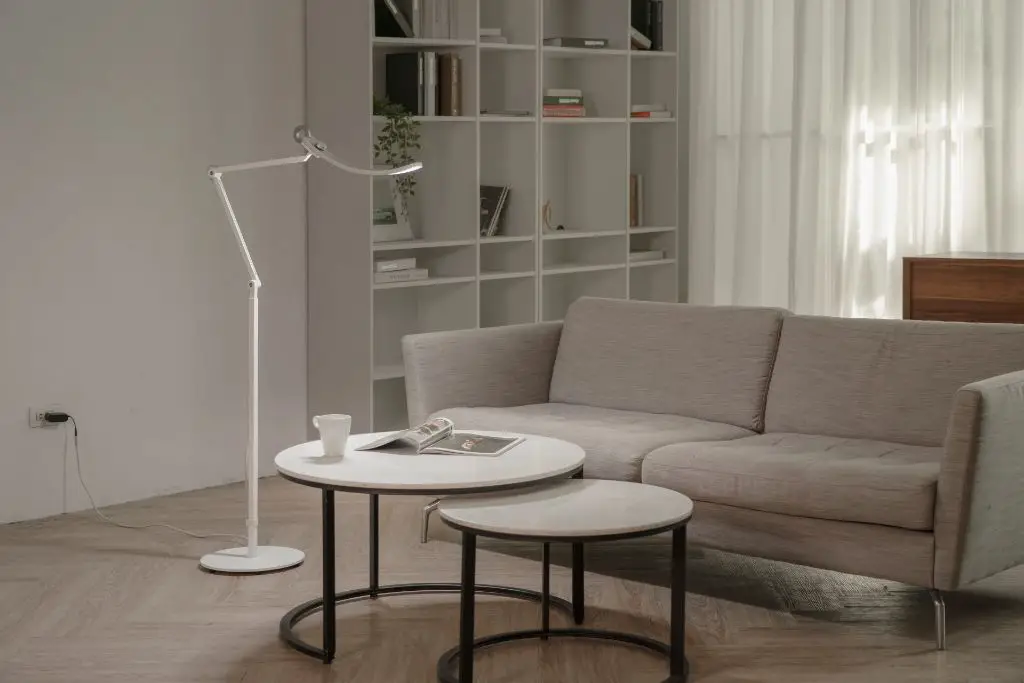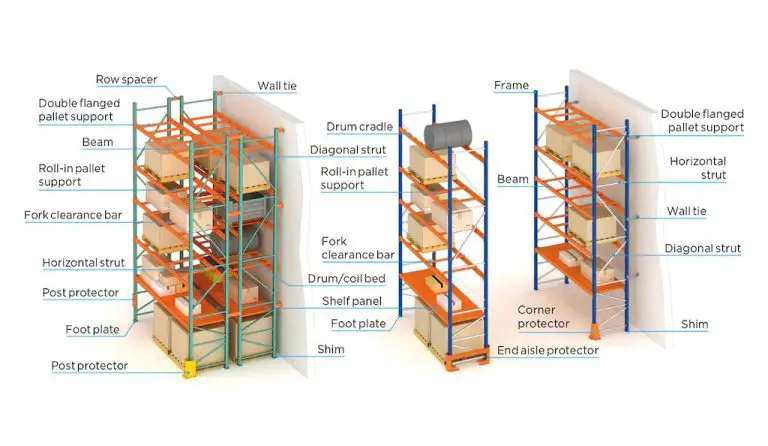Where Do Floor Lamps Look Best?
Floor lamps can add great lighting and style to any room in a home. Unlike overhead lighting, floor lamps provide directional illumination that can be adjusted and focused where needed. Strategically placing floor lamps can dramatically enhance the ambiance, aesthetic, and functionality of a space.
The positioning of floor lamps impacts both the visual look of a room as well as the quality of light provided. Thoughtfully situating floor lamps in relation to furniture, walkways, focal points, and existing light fixtures allows them to complement a room rather than clutter it. Taking into account the style, height, and shade of a floor lamp ensures it provides pleasing radiance without glare or shadows.
With the right placement, floor lamps not only supply supplementary light but become decorative features that improve the overall atmosphere of a home’s interior.
Living Room
One of the most popular places to position a floor lamp is in the living room, as it can provide both ambient and task lighting next to seating areas and reading nooks. Floor lamps are commonly placed next to sofas or chairs to cast a warm glow for relaxing or reading. The long reach of a floor lamp makes it easy to position the light right where it’s needed without taking up table space. According to Archiology, floor lamps positioned by seating areas help “create pools of light for different zones,” allowing for tailored lighting in a large living room.

Floor lamps placed next to sofas should be approximately 18-24 inches away to avoid knocking over the lamp. Make sure to pick a sturdy lamp base if placing it in a high-traffic area. For reading nooks, an articulating task light is ideal to direct the beam right onto your book (Archiology). Philips Hue also recommends placing floor lamps behind couches to add depth and dimension if the sofa doesn’t sit flush against a wall.
Bedroom
Floor lamps are often placed next to the bed in bedrooms, to provide convenient lighting for late night reading or other bedside activities. The soft, ambient lighting from a bedroom floor lamp allows you to illuminate the space without glare or harsh overhead lighting (Philips). Positioning a floor lamp on one or both sides of the bed provides easily accessible lighting while relaxing or reading in bed. Swing arm floor lamps are a popular choice, as they allow flexible positioning of the light source nearer to the bed when needed.
Choosing a floor lamp with a dimmer switch or dimmable bulb allows you to control the ambiance and adapt the lighting to your needs. Softer, lower lighting from a bedroom floor lamp enables relaxation, while brighter light can provide illumination for reading without disturbing a sleeping partner on the other side of the bed. The style and finish of the floor lamp can complement the existing decor – brushed nickel or bronze finishes often pair well with most color schemes.
Home Office
Positioning a floor lamp next to a desk or work area in a home office is an excellent way to provide task lighting and reduce eye strain [1]. The floor lamp illuminates the desk surface evenly, eliminating shadows that can make reading difficult. Place the lamp on the side you write with if you’re right or left-handed to avoid casting shadows with your arm. Angle the shade to concentrate the light on the work area rather than pointing straight down. Choose a floor lamp with an adjustable arm and head to direct the beam precisely where needed. Consider a floor lamp with a built-in USB port to conveniently charge devices while working. Position a floor lamp near a reading nook or sitting area in the home office as well to create a cozy ambience for relaxation.
Entryway
Placing a floor lamp in the entryway creates a welcoming glow when guests first enter your home. It’s an excellent way to illuminate a dark foyer or hallway, allowing visitors to see clearly as soon as they walk in the front door (The Archiology). Positioning a floor lamp near the entryway also serves as a handy light source for finding keys or umbrellas before heading out. Try placing the lamp in a corner near the door or coat rack for a soft pool of light. Just be sure to select a height that prevents the lampshade from getting knocked into.
Having a floor lamp in the entryway can also provide light when coming home after dark, helping you avoid stumbling on stairs or obstacles. Place it close to where you remove your shoes or hang your coat for convenient visibility. Just be mindful of proportions, keeping taller lamps away from low ceilings, which can make the space feel cramped.
Corner Positions
Placing a floor lamp in a corner of a room is a great way to maximize its effect. The light from a corner floor lamp will help illuminate what are often the darkest parts of a room. Positioning a floor lamp in a corner also creates a dramatic look, with the light fixture helping accentuate the architecture of the space.
When situating a floor lamp in a corner, angle it so the light is directed into the main area of the room. This will make the lamp more functional. Consider placing the floor lamp in the corner diagonal from the main seating area, which will make it easy for the light to reach where it’s most needed.
For safety, take care that a corner floor lamp has a wide, sturdy base to prevent tipping. Many floor lamps designed for corner placement will have bases shaped for stability or wall hooks to secure them. Select a lamp height that works for the ceilings in the room – often 60″ or taller styles are best to distribute light from corner positions.
Using a corner floor lamp with an adjustable head provides flexibility. Aim the light high to bounce illumination off the walls and ceiling, for soft, ambient lighting. Angling the light down focuses illumination right where it’s needed most. Corner floor lamps with swing arms can direct light in different directions as needed.
Corner floor lamps can be used to create a moody atmosphere, illuminating the space with soft uplighting. Or maximize functionality by choosing models with high wattage, energizing bulbs to really brighten up the room’s darkest spots. Take advantage of this unique location to add drama and useful light.
Asymmetrical Layouts
Placing floor lamps in asymmetrical positions throughout a room is an excellent way to add visual interest and dimension. Rather than sticking to a perfectly balanced layout, experiment with off-center lamp placements to break up the symmetry. For example, you might position a tall floor lamp in a back corner of the living room, offsetting a sofa on the opposite wall. Or place a swing arm lamp next to an armchair that’s floating in the middle of the room. When furniture and lighting arrangements are too perfectly matched on either side, the room can start to look stagnant and stale. An asymmetrically placed floor lamp introduces a touch of the unexpected, leading the eyes around the space in a more dynamic way.
Asymmetrical lamp layouts work especially well in large, open concept spaces to differentiate multiple seating areas or activity zones. A floor lamp tucked into an unused corner helps balance out furniture on the opposite side while delineating that space. The contrast between balanced and unbalanced elements brings visual tension and energy to the room. Don’t be afraid to experiment with unexpected lamp placements to liven up the look and feel of any interior.
Focal Points
Floor lamps can help emphasize certain elements in a room and create visual balance by serving as focal points. Strategically placing a floor lamp near artwork, shelves, or architectural details will draw the eye and highlight those features. The lamp’s height and lighting can create a dramatic effect. For example, placing a tall floor lamp behind a sofa will illuminate artwork on the wall above. Or positioning a lamp near built-in bookshelves will accentuate and bring focus to the shelves. Using an eye-catching lamp with unique shapes or materials also helps create a strong focal point.
Here are some tips for using floor lamps as focal points:
- Place the lamp near, but not directly beside, the area you want to spotlight. Having some space around the element creates a framing effect.
- Choose a lamp that is proportional to the size of the wall or area you want to illuminate. A too-large or too-small lamp will look out of place.
- Use directional lighting. Make sure the light bulb points toward the focal point rather than spilling light everywhere.
- Pick a lamp in a contrasting color or material from the surrounding décor. This helps it stand out.
- Consider a lamp with unique sculptural shapes or silhouettes. Its form can become a focal point itself.
Well-placed floor lamps as focal points add ambiance and visual interest to a room. Strategically highlighting architectural or decorative elements can help pull a space together.
Proportion & Scale
The proportion and scale of a floor lamp is crucial for maximizing its visual appeal and function in a space. The goal is to select a lamp that complements the room’s existing furnishings in size and style. As a general rule, the lamp should be 1.5 to 2 times the height of the largest seating in the room. A lamp that is too large or small for the space will look awkward and out of place.
For example, a dainty desk lamp would be dwarfed and ineffective in a living room with bulky sectionals. On the flip side, an overly large torchiere lamp would dominate a cozy reading nook. Take measurements of your furniture andspace to determine the ideal lamp height. Standard floor lamp sizes range from 48 inches up to 84 inches for very tall statement pieces.
The proportion of the lamp’s base, stem and shade should also be balanced. An oversized shade on a spindly base has poor proportions. Selecting a lamp with harmonious scaling that aligns with the room’s decor conveys both style and purpose.
Additionally, consider the lamp’s purpose. Task lamps demand proper illumination range, while ambient lamps prioritize aesthetics. Carefully weighing proportion and function ensures your new floor lamp elevates the space.
Conclusion
When using floor lamps in your home, there are several key placement principles to keep in mind. Floor lamps work well in living rooms and bedrooms, where they can provide flexible, directional lighting near seating areas. They can also highlight focal points and create visual interest in entryways and home offices. Corner positions and asymmetrical layouts allow floor lamps to shine without cluttering a space. Most importantly, choose floor lamp sizes and styles that are scaled appropriately to your room. With the right placement, floor lamps can be moved around easily to transform any space.




